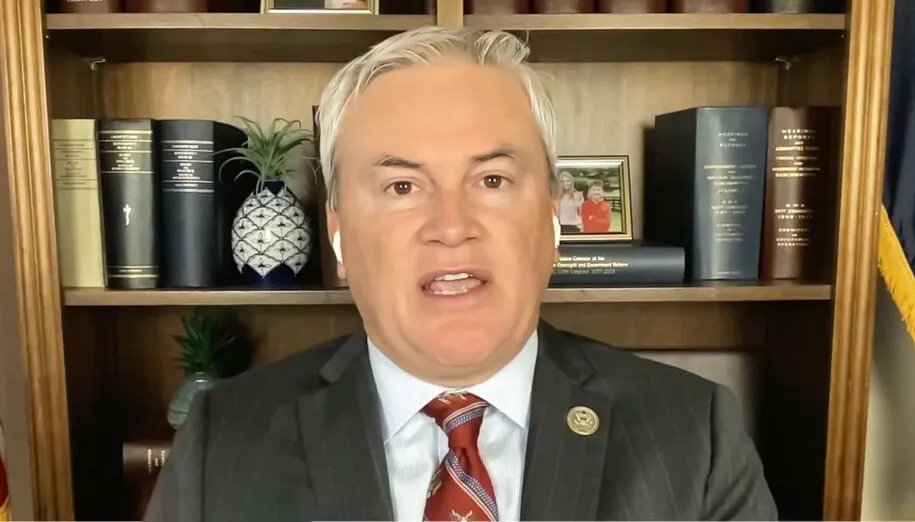 The Murray, Ky., Woman’s Club meets in a building that’s a memorial to a president who won nearly 90 percent of the local vote when he was elected going on 85 years ago.
The Murray, Ky., Woman’s Club meets in a building that’s a memorial to a president who won nearly 90 percent of the local vote when he was elected going on 85 years ago.
Workers from the National Youth Administration built the roomy limestone clubhouse in 1939-40. The NYA was a major jobs program under Franklin D. Roosevelt’s Depression-fighting New Deal.
Try suggesting something like the New Deal “at a modern-day Democratic fundraiser and you will likely be met with silent horror and a sudden dearth of invitations to any future New York, DC, or Silicon Valley parties,” Krystal Ball wrote in her new book, Reversing the Apocalypse: Hijacking the Democratic Party to Save the World. (True confession: Ball briefly quoted me in her book. But I will abstain from quoting myself.)
 Ball is an unabashed FDR fan—as am I. She is a former Democratic congressional hopeful who is best known for co-hosting MSNBC’s The Cycle. She still appears as a guest on the network’s talk shows. Also, Ball writes on politics for Glamour Magazine‘s The 51 Million.
Ball is an unabashed FDR fan—as am I. She is a former Democratic congressional hopeful who is best known for co-hosting MSNBC’s The Cycle. She still appears as a guest on the network’s talk shows. Also, Ball writes on politics for Glamour Magazine‘s The 51 Million.
In Reversing the Apocalypse, Ball argues that the Democratic party must return to its New Deal roots to overcome the “populist charlatan” Trump and to stave off a sequel to King Leer.
In 1938, Roosevelt quoted President Abraham Lincoln almost word-for-word, declaring that “the legitimate object of government is to do for a community of people whatever they need to have done, but cannot do at all, or cannot do so well, for themselves, in their separate and individual capacities.”
The New Deal reflected Lincoln’s philosophy of governing. The most famous native son of Kentucky, where I’ve lived all my 67 years, employed the full might of the federal government to win the Civil War, preserve the Union, and end slavery.
The Virginia-born Ball lives in Louisville, our state’s largest city. My fellow Kentuckian faults Presidents Jimmy Carter and Bill Clinton for abandoning FDR’s social democratic legacy. The result, according to the author, was 40 years of economic dislocation that resulted in the “apocalypse” of last Nov. 8.
“We can see in FDR a model for a Democratic Party that truly lives up to being the People’s Party,” she maintains.
Ball admits that Roosevelt “was…far from perfect.” She said the 32nd president was thwarted “in what he could accomplish on race by powerful southern Democrats who fought against any sort of integration and fought against including blacks in New Deal Programs.”
Nonetheless, most historians consistently rate FDR one of America’s three greatest presidents, trailing only George Washington and Lincoln.
 Roosevelt won an historic four terms—all landslides—and led the country through two of its worst crises—the Great Depression and World War II. No president was more popular in the Bluegrass State than FDR.
Roosevelt won an historic four terms—all landslides—and led the country through two of its worst crises—the Great Depression and World War II. No president was more popular in the Bluegrass State than FDR.
Murray is the seat of Calloway County in deep southwestern Kentucky, my neck of the woods. Calloway gave FDR 88.2 percent of its vote in 1932; 85.3 in 1936; 86.5 in 1940, and 81.1 in 1944, according to Presidential Politics in Kentucky 1824 to 1948 by Jasper B. Shannon and Ruth McQuown.
(I live in Mayfield, the seat of adjoining Graves County, where Roosevelt also rolled—piling up 84% (1932); 83% (1936); 82% (1940) and 78% (1944). Susie and Diehl Vest, my union card-carrying maternal grandparents, voted for FDR every time.)
Unemployment was nudging 25 percent when Roosevelt took office. His priorities were putting the country back to work and enacting long-term reform to prevent another Depression.
Though a millionaire, FDR understood that a job meant more than a paycheck. “True individual freedom cannot exist without economic security and independence,” he said. “People who are hungry and out of a job are the stuff of which dictatorships are made.”
In 1933, Germany, also Depression-wracked, fell under Adolf Hitler’s homicidal, anti-Semitic Nazi dictatorship. Hitler would order the murder of six million European Jews and bring on the bloodiest and most destructive war in history.
“FDR’s ascent to the presidency in 1933 happened at a time not so different from the times we are living in now,” wrote Ball. “Then as now, we were dealing with massive economic dislocation and terrifying global instability. On the economic front, inequality was rampant.”
When Hitler and the Nazis set about destroying Germany’s fragile Weimar democracy, Benito Mussolini’s fascist dictatorship in Italy was a decade old. In the Soviet Union, Joseph Stalin ruled like the most brutal and murderous of czars.
In his country, Roosevelt decided that desperate times called for “properly directed radicalism,” Ball wrote. She quoted the president: “There is no question in my mind that it is time for the country to become fairly radical for a generation. History shows that where this occurs occasionally, nations are saved from revolutions.”
Roosevelt was a revolutionary, according to historian Doris Kearns Goodwin. “Indeed, the Roosevelt years had witnessed the most profound social revolution in the country since the Civil War – nothing less than the creation of modern America,” she wrote in No Ordinary Time Franklin & Eleanor Roosevelt: The Home Front in World War II.
Ball pointed out that the “New Deal increased unionism dramatically, created Social Security, established the Tennessee Valley Authority and Rural Electrification Administration. Massive infrastructure projects like the Lincoln Tunnel and the Grand Coulee Dam were undertaken. And the government directly created jobs on a massive scale.’’
She cited statistics from historian and sociologist Harvey J. Kaye.
- Between 1933 and 1942, the Civilian Conservation Corps, FDR’s “Tree Army,” employed 3 million young men who planted more than 2.3 million trees, slowed ruinous soil erosion on 40 million acres of farmland and built 800 new state parks. (The preserves included Columbus-Belmont State Park near my old Kentucky home.)
- In 1933-34, the hardest of Depression hard times, the Civil Works Administration put to work 4.5 million people who constructed or improved a half million miles of roads, 40,000 schools, more than 3,500 playgrounds and athletic fields, and 1,000 airports.
- The Works Progress Administration, of which the NYA was part, provided jobs for 8.5 million Americans between 1935 and 1943. They upgraded 600,000 miles of rural roads, laid 67,000 miles of city streets, erected 78,000 new bridges and viaducts, constructed 40,000 public buildings and built several hundred airports. (My grandfather and uncle worked for the WPA helping clean up Paducah, Ky., after the disastrous 1937 Ohio River flood.)
Ball cited FDR’s famous 1941 state of the Union address, better known as the “Four Freedoms Speech.”
“In the future days, which we seek to make secure, we look forward to a world founded upon four essential human freedoms,” the president said.
- “The first is freedom of speech and expression–everywhere in the world.
- “The second is freedom of every person to worship God in his own way–everywhere in the world.
- “The third is freedom from want–which, translated into world terms, means economic understandings which will secure to every nation a healthy peacetime life for its inhabitants-everywhere in the world.
- “The fourth is freedom from fear–which, translated into world terms, means a world-wide reduction of armaments to such a point and in such a thorough fashion that no nation will be in a position to commit an act of physical aggression against any neighbor–anywhere in the world.”
Ball focused on “freedom from want,” which, she wrote, “didn’t come with caveats about how many hours of job searching you must engage in or how well you need to do on the SAT.
“It didn’t come with distinctions about who was worthy of economic stability and who was not. In its idealized version, FDR’s Freedom from Want was a universal right owed to all human beings simply through their existence on this planet.”
She said that through the New Deal, the president was able to forge “a historically rare, cross-racial working-class coalition that elected FDR to an unprecedented four terms. It was enough to overcome the overwhelming and highly organized business and financial opposition to the New Deal. It was enough ultimately, along with the remaining three freedoms, to provide the philosophical underpinning for our fight in World War II, a war in which every American would play some part. It was enough to lay the groundwork, along with the war, for decades of a rising middle class and widespread prosperity.”
Ball laments—and so do I—that the current Democratic party is less than committed to robust federal activism needed to help people who need help.
She said that even during the depths of Republican President George W. Bush’s “Great Recession,” no mainstream Democrats called for New Deal-scale government jobs programs.
“Under President Obama we spent more time considering cuts to the safety net than we did considering ways to bolster worker power,” she wrote. But the Democrats’ drift from the New Deal spirit started with President Jimmy Carter, not Obama or President Bill Clinton, according to Ball. Carter “dealt a significant blow to the labor movement by deregulating the trucking and rail industries” while “the populist sounding Bill Clinton” cemented “the party’s affiliation with the Silicon Valley and Wall Street elite into place.”
Ball insisted that her book is not about the 2016 election except that Trump’s win reflected “the culmination of fundamental changes and anxieties that have been building for years.” She chose to concentrate her “critiques and…prescriptions on the Democratic Party, although suffice it to say that Republicans have been both disdainful and exploitative of working-class Americans for pretty much ever and have continued in this direction under their new populist charlatan leader.”
Ball will “leave it for someone on that side of the aisle to perform that analysis.”
Ball challenged the Democratic powers-that-be to not write off all Trump voters as irredeemable. “Were there racists who voted for Donald Trump?” she asked. “Absolutely. Sexists? Yep. Generalized bigots and trolls and the worst person who’s ever invaded the comments section? You’d better believe it. And those dark forces should be exposed and called out wherever they are found.”
She agreed that Trump “is…all of the of the awful things we said he was during the campaign. A racist, a sexist, an authoritarian, a liar, a con artist, a complete and utter fraud.”
But she warned that “Trump’s moral illegitimacy doesn’t render all of the concerns of his supporters illegitimate.” Ball counseled that “slapping the ‘racist’ label on every Trump voters is also just not accurate. There were also people who voted twice for the change they hoped they would find in President Obama and then decided to throw their lot in with Trump. There were people who backed Hillary in her 2008 campaign but had long since lost the thread of the connection the Clintons once had with working people.
“There were people who opted for the possibility of change with a side of potential catastrophe rather than accept the guarantee of mediocrity embodied in a Clinton presidency. And there were people who were just so damn desperate and vulnerable that they decided to believe the promises of a professional huckster and con artist.”
Ball wrote that Trump “stands in opposition to the principles of democracy on which our country is founded.” Nonetheless, she said a part of her is still hopeful.
She concluded: “I think it’s just possible that after allowing economic problems to fester and massive structural shifts to go undealt with, the political apocalypse of President Trump will force us to reckon with our impending economic apocalypse. Will we bury our heads in the sand or listen to the useful parts of the very loud message voters have been trying to send us year after year? The nation and the world wait our answer.”
–30–
 This book review is by Berry Craig, emeritus professor of history at the West Kentucky Community and Technical College in Paducah and a freelance writer. Cross-posted by permission and with gratitude.
This book review is by Berry Craig, emeritus professor of history at the West Kentucky Community and Technical College in Paducah and a freelance writer. Cross-posted by permission and with gratitude.
Comments







